How Could 'Baby Bonds' Address Wisconsin's Racial Wealth Gap?
Setting aside government money at birth for all children has been tried both inside and outside of the United States — and even in Wisconsin. Not everyone is a fan.
Wisconsin Watch
August 5, 2021 • West Central Region
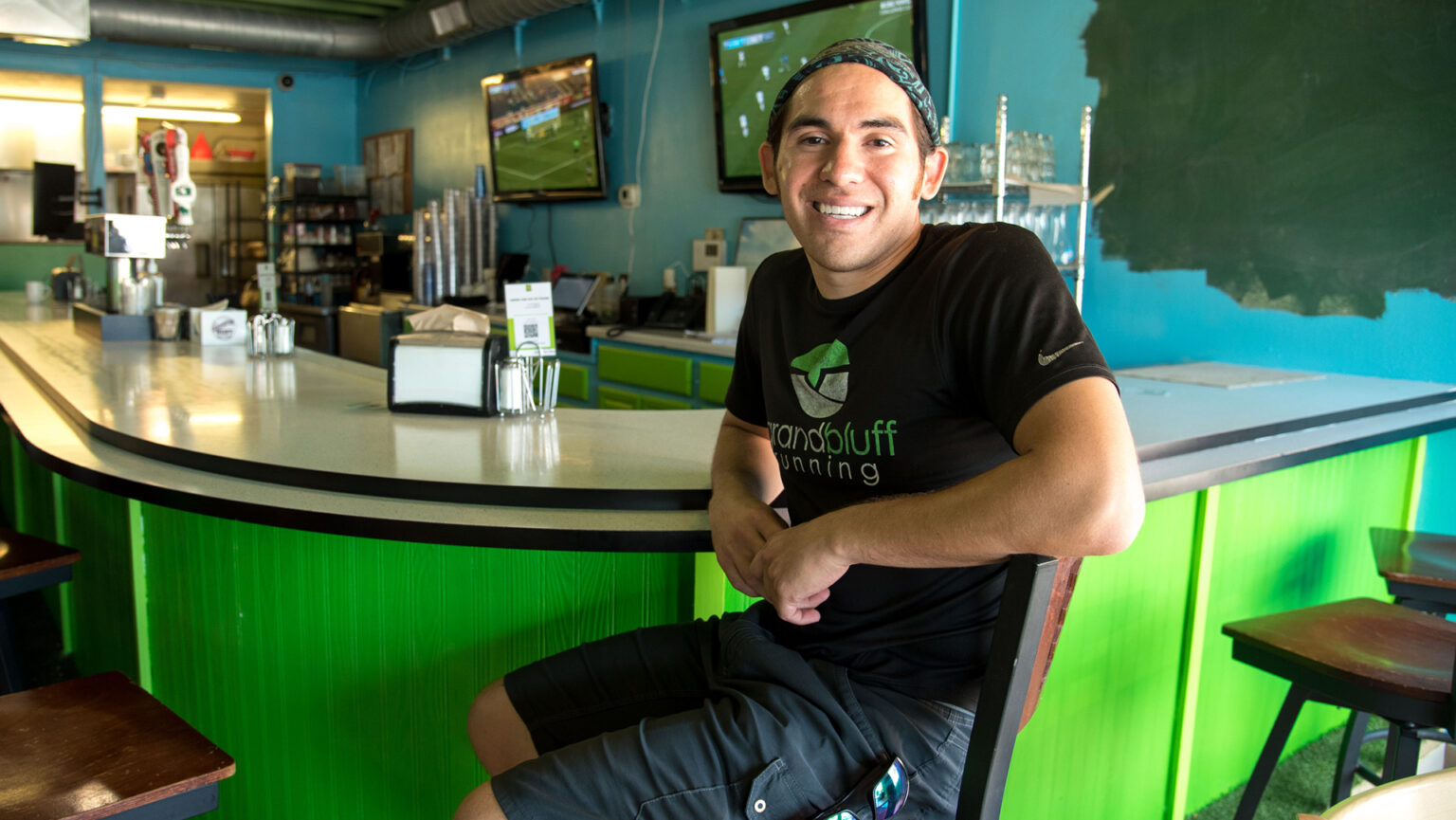
Donald Greengrass sits inside his La Crosse business Greengrass Cafe, which he opened with money he received from the Ho-Chunk Nation's Child Trust Fund Program. Ho-Chunk members receive a lump sum when they turn 18 and graduate from high school, funded by revenues from the tribe's gaming facilities. Photo taken July 12, 2021. (Credit: Will Cioci / Wisconsin Watch)

By Ben Baker and Zhen Wang, Wisconsin Watch
On a recent weekday, Donald Robert Greengrass Jr., 29, was smiling, greeting locals and chatting with staff at his restaurant in La Crosse, Wisconsin. The young entrepreneur — wearing long braids and sporting a tattoo of an eagle on his right forearm and a sea turtle on his left — was determined not to let the pandemic kill his business.
When La Crosse County started lifting the pandemic restrictions late this spring, he applied for the Restaurant Revitalization Fund, restructured the ownership and refreshed the paint.
Greengrass is the co-owner of the Greengrass Café, located across from the University of Wisconsin-La Crosse campus. While a rising junior at the university, Greengrass came up with a bold idea: Owning his own business. But that required money.
Fortunately for Greengrass, he had that covered. As a member of Wisconsin’s Ho-Chunk Nation, Greengrass received a large sum of money — about $150,000 before taxes — after graduating from high school at the age of 18. And he had invested it wisely, in real estate and the stock market, helping it to grow.
The tribal nation has been giving out payouts to members when they reach early adulthood since the early 1990s, financed by Ho-Chunk Gaming, the tribe’s gambling arm.
Almost 30 years later, during the 2020 election campaign, Democratic presidential candidate Sen. Cory Booker floated the idea of a government-funded program for all U.S. children. It would create a nest egg that would grow in value as they aged, providing money to pursue college, purchase a home or provide for other wealth-building investments.
Booker’s “baby bond” proposal was designed in part to narrow America’s yawning gap in which Black families on average have roughly one-tenth of the wealth of white families, making them less able to successfully launch their children into adulthood.
While the New Jersey senator failed to win the presidency, his idea lives on in both the form of a bill introduced in Congress and among academics and policy makers, who view the idea as a viable strategy to lift the living standard for disadvantaged communities, including people of color.
One study estimates such a program would cost about $80 billion a year, providing as much as $50,000 per child to draw on upon reaching early adulthood. In addition to the high price tag, debate surrounds both the logistical implementation of the program, as well as how money should be allocated: Should the money come with strings attached? Or should it be treated like any other family wealth, subject to the priorities and needs of the people who have it? Should the full amount be doled out to all children, or on a sliding scale, depending on family need?
‘It’s helped me quite a bit’
In 1992, just a year after Greengrass was born, the Ho-Chunk Nation began to operate a baby bond-style program, the Child Trust Fund Program, financed by revenues from the tribe’s casinos and known colloquially as “18 money.”
Greengrass describes it as a way to spread the wealth.
“We are a tribe, so we have to look out for everybody,” Greengrass said. “Since we were given these things, it’s like, ‘We don’t want to turn around (and) just have several people with all the money.’ We’re trying to grow as a nation.”
Receiving an 18 money account, however, is not automatic — and acquiring the funds comes with a caveat. Ho-Chunk Nation spokesman Kenneth Luchterhand said those who wish to receive the payouts must first prove they are at least 25% Ho-Chunk, and they must graduate from high school.
With the expansion of the Ho-Chunk’s gambling operations, casino revenue has increased, and so has the share for each child. The 18 money payouts reportedly went from $17,000 in the 1990s up to $200,000 in 2015. Luchterhand declined to comment on the exact amount of cash Child Trust Fund Program recipients could receive.

Donald Robert Greengrass Jr. said the Ho-Chunk Nation’s “18 money” program payouts offer young tribal members a financial “stepping stone,” but not everyone uses it wisely. Photo taken July 12, 2021. (Credit: Will Cioci / Wisconsin Watch)
In 2010, when Greengrass turned 18 and graduated from Logan High School in La Crosse, a lump sum hit his bank account, amounting to $150,000 before taxes.
It was a satisfying summer. Greengrass gave himself $1,000 to spend on purchases including new shoes. He also took roughly $5,000 out for a two-week trip in London, a dream he planned out in eighth grade. He enjoyed the view of the city from the giant London Eye ferris wheel and explored other sites including the Tower of London.
But then he returned home — and got down to business. In the summer of 2010, he put the rest of his payout into the stock market. And he started college at UW-La Crosse.
While a junior majoring in business, management and marketing at the UW-La Crosse, he bought a four-bedroom house a 10-15 minute drive from campus, and rented it out to cover the mortgage.
In 2012, he took a business law class with Vivek Pande, an associate professor of business law, who shared his entrepreneurial enthusiasm and later became his business partner. Greengrass sold the rental property in early 2014 at a profit.
In the summer of 2014, when he was about to enroll in his fifth year, Greengrass opened the Greengrass Café near campus, with an investment of over $100,000. “(The 18 money)’s helped me quite a bit, because it allowed me to start this place,” he said.
‘It’s probably a mix’
Growing up in a middle-class neighborhood in La Crosse, Greengrass did not feel overwhelmed after receiving the big payout at 18.
“It was exciting for like 5 minutes,” he recalled. “I was also expecting it.”
While he was able to make the money grow, Greengrass said his story does not apply to every young person in his community. He knew some fellow tribal members who blew the money on fancy trips and frivolous purchases.
How well do young tribal members use the money? “I’d say it’s probably a mix,” he said.
In the Ho-Chunk Nation, those who receive 18 money may spend their cash however they choose, which Luchterhand said results in disparate financial outcomes for recipients.
“It’s mixed bag,” Luchterhand said. “There have been great cases and there have been bad cases. One young man went through all his money in a week. On the other hand, some people have done very well with it.”
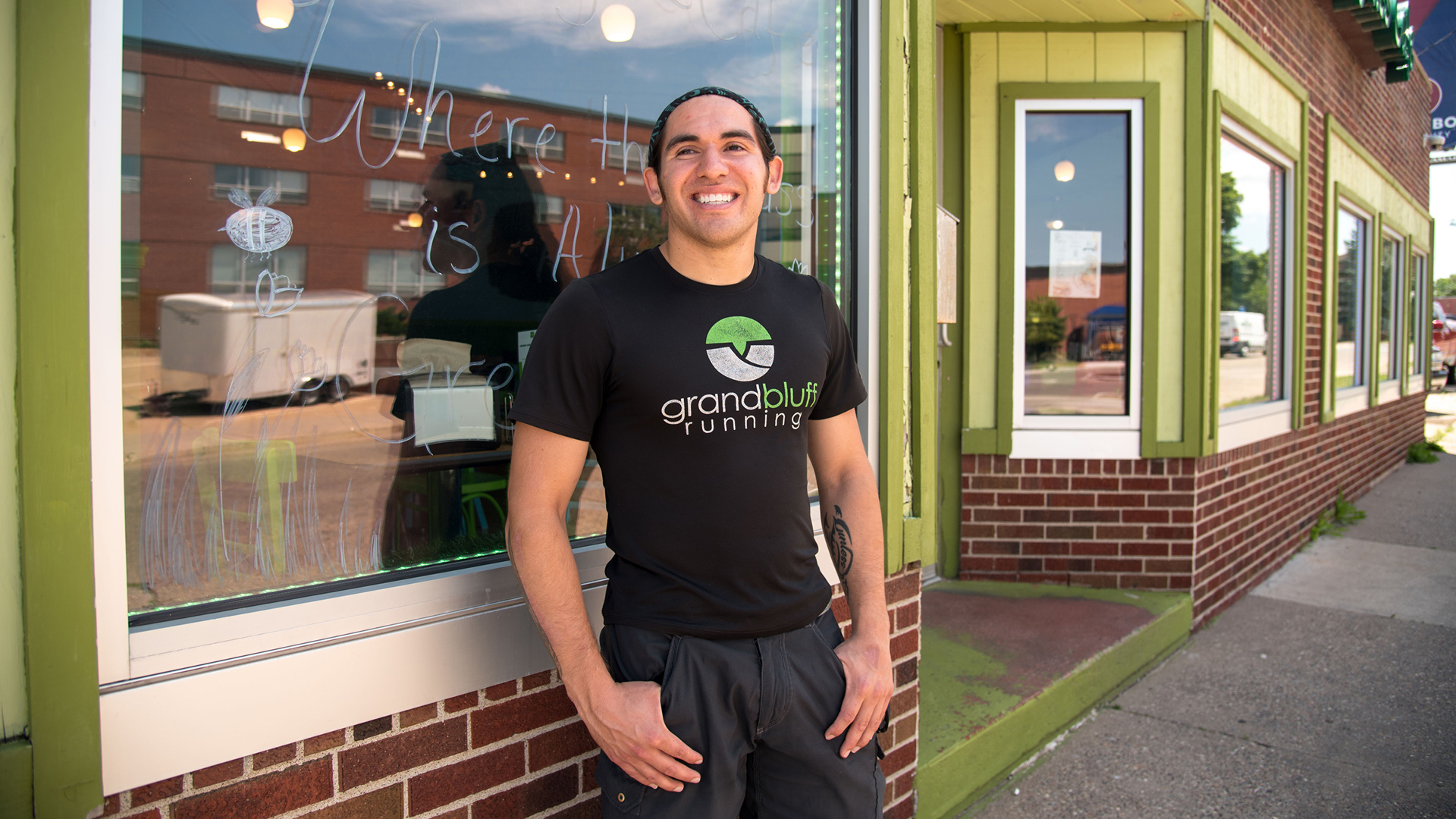
Donald Robert Greengrass Jr. stands outside the Greengrass Cafe, which he opened with money he received from the Ho-Chunk Nation’s Child Trust Fund Program. Policy makers have proposed a similar national “baby bond” program to help low-income children entering adulthood have a nest egg they could use to pay for college, buy a house or pay for necessities. Photo taken July 12, 2021. (Credit: Will Cioci / Wisconsin Watch)
Greengrass said some tribal children from poor families may not see money the same way he does, and they may not be prepared to handle it.
“Their parents are not able to teach them long-term thinking, because they are too busy worrying about short-term (things) … it can be stressful,” he said. “You don’t have the luxury of thinking five years down the road. You just survive ’til the end of this month.”
Further safeguards proposed
The program has had positive impacts. The graduation incentive generated a measurable increase in Ho-Chunk high school graduation rates since the Child Trust Fund Program was implemented, Luchterhand said. College attendance rates also grew since the program’s inception, although Luchterhand added he “can’t necessarily say for certain” if the program is responsible.
The Ho-Chunk Nation implemented a mandatory financial literacy course, which all program enrollees must complete to open their accounts, to curb frivolous spending by recipients.
“I know that was a problem for a little bit, but they’re trying to make sure that people are more prepared to receive this money, which was a good idea,” Greengrass said.
But he said feeding teenagers some basic financial knowledge alone is not enough, as they can be susceptible to the influence of their peers. Greengrass said they may end up buying a nice car to follow what other recipients have done.
Greengrass favors doling out the full amount over time, with beneficiaries receiving 20% at age 18, and the rest in three to five years. He said the payouts should loosely tie with their education, particularly higher education.
Ho-Chunk leadership reportedly floated the idea of restructuring the distribution of cash from a Child Trust Fund Program account to spread it out over an extended period of time as opposed to allowing full access to the accounts immediately. The Ho-Chunk legislature also considered tying the payouts to college graduation or military service, but Greengrass said these proposals were never adopted.
At the state level, state Sen. Melissa Agard of Madison and other Democrats in July introduced a package of bills that include a baby bond proposal in which the state would invest $3,000 for each baby born to Medicaid-eligible Wisconsin families. The funds could be accessed at age 18 and used for a home purchase, higher education, starting a business, child care, a retirement account contribution or other type of investment. Baby bond accounts could grow with any donations or other contributions to the state’s baby bond trust fund, according to the proposal.
“Baby Bonds will help to level the playing field at a time where income inequality is increasing at an alarming rate, especially in communities of color who have been harmed by historic economic injustices,” Agard says on her legislative website.
Racial wealth gap huge
Naomi Zewde, a researcher at the Center on Poverty and Social Policy and assistant professor at City University of New York, has studied the potential impacts of a baby bond program. She told Wisconsin Watch that she believes it could work, providing a much-needed safety net or cushion for low-income young adults — many of them raised in families of color.
“When you take the random white household from the very middle of the distribution, they’ve got 10 times the wealth of the middle Black household,” Zewde said. “So, 50% of Black households in the United States have fewer than $17,000.”
Perhaps nowhere in the United States is the opportunity gap between white and Black Americans more stark than in Wisconsin. In fact, Erica Nelson of Race to Equity said her organization’s 2019 report found that as poverty among Black children fell nationwide in 2017 and 2018, the rate among Black children in Wisconsin rose 6%.

Naomi Zewde, a researcher at the Center on Poverty and Social Policy and assistant professor at City University of New York, has studied the potential impacts of a “baby bond” program. She believes it could work, providing a much-needed safety net or cushion for low-income young adults — many of them raised in families of color. (Credit: Courtesy of Naomi Zewde)
Zewde studied the impact of a baby bond program in growing the average American’s wealth and narrowing the racial wealth gap. Her research looked at children born in the late 1980s and early ’90s and projected what they would receive at adulthood under such a program. The amount each was allocated depended on family wealth, with children from more affluent families receiving less than those from low income families.
When implemented over a hypothetical period, the results proved remarkable. All income groups experienced a spike in net worth, Zewde found — nearly closing the racial wealth gap among young adults.
Zewde calculated that without the baby bond program, median wealth among young white adults is about 16 times that of young African Americans — $46,000 versus $2,900. Under that program, white young adults would hold a median wealth of $79,159, and African-American residents would have $57,845.
And the benefits go beyond purchasing power, Zewde said.
“Wealth … reduces mortality, it reduces racial health disparities, and also it confers a kind of standing in your community,” Zewde said, including the ability to launch a business and exercise political clout.
Welfare programs not enough
Traditionally, the conversation surrounding closing the racial wealth gap in the United States revolved around expansions to existing welfare programs. But, in a public talk on assessing Black economic well-being in 2020, Duke University’s William A. Darity, professor of public policy, African-American studies and economics, said such benefits fail to address the overwhelming lack of Black wealth when measured up against that of white Americans.
For example, the landmark GI Bill, passed in the wake of World War II, was structured in a manner that systematically prevented many Black veterans from accessing the mortgages and higher-education benefits the legislation provided. Darity argued existing social safety programs do little to reverse the systematic exclusion from government benefit programs previously faced by African American citizens.
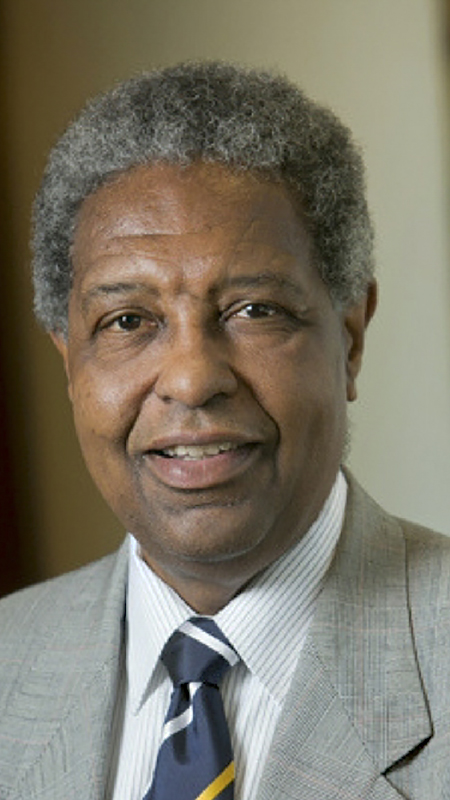
William A. Darity, professor of public policy, African-American studies and economics, says increasing the size of welfare programs is not the way to erase the racial disparities in wealth and income in the United States. Programs such as “baby bonds” and reparations for descendants of enslaved people would be more effective, he says. (Credit: Courtesy of Duke University)
“The (welfare programs) were structured to exclude Blacks from their benefits,” Darity said. “Blacks did not get full access to the nation’s social safety net until 1965 — three decades later. It has also never been true that the majority of recipients of federal benefits are Blacks.”
The existing structure also is not designed to grow the wealth of recipients, but rather to assist in fulfilling the basic needs for survival, he said.
Zewde described wealth as a “stock” to be invested or reserved for emergencies. She said closing the wealth gap between African-American residents and white Americans is just one piece of an approach that should also include efforts such as raising wages.
Booker’s baby bonds
In recent years, momentum has grown behind the concept of a baby bond program.
In 2018, Booker introduced the American Opportunity Accounts Act to provide each child born in the United States with an account seeded with $1,000 which would appreciate in value until the child’s 18th birthday. Payout for the program would range from $5,500 to $37,000 depending on a child’s family income, with those hailing from lower income families receiving more money each year. Booker’s proposal was cosponsored by 22 members of Congress, including Democratic Wisconsin Sen. Tammy Baldwin.
Such a proposal is not unique to the United States.
In the United Kingdom, Parliament implemented a Child Trust Fund program in 2005 which provided each child born in the UK with a savings account with a baseline of $348 and an additional $348 for children living below the poverty line.
Parents, relatives and friends could contribute up to $1,672 annually until the owner of the account turned 18. The program, on average, was set to provide the average recipient with a payout of $13,239 in 2020. It was phased out and dismantled in 2010 at a time of national austerity. The rollbacks, however, did not entirely cut off those who had already opened up accounts from accessing their cash and some of the first Child Trust Fund enrollees began receiving their money last year.
The American Opportunity Accounts Act grants access to all funds available on the recipient’s 18th birthday, but explicitly states the money may only be used for a handful of approved purposes, including college tuition, home ownership and retirement.
Zewde cautions against limiting how the money should be used, saying it might be needed to cover emergency expenses or daily survival needs.
“Maybe they (baby bond beneficiaries) just need a place to live, and maybe they need to use that money to buy their basic needs and it just ends up preventing whatever trauma would have resulted from their lack of access,” Zewde said. “What if a person needs a kidney transplant or else they’re going to die? Maybe there’s something in between restrictions and full access that could happen.”
Greengrass said a baby bond program alone is not enough to narrow a racial wealth gap, as wealth has accumulated for generations. “It helps them get a stepping stone. I would say it’s a stepping stone. That is really all there is to it,” he said.
Planning his next move, Greengrass is pursuing a master’s degree in business administration and expanding his restaurant business while holding something big in his mind — finding a way to give back to the Ho-Chunk Nation which has done so much for him.
He is not ready to share that plan but, “If that works out, I think the nation, as well as the communities around us, will see a big increase in well-being.”
This story was produced as part of an investigative reporting class at the University of Wisconsin-Madison School of Journalism and Mass Communication under the direction of Dee J. Hall, Wisconsin Watch’s managing editor. The nonprofit Wisconsin Watch collaborates with WPR, Wisconsin PBS, other news media and the UW-Madison School of Journalism and Mass Communication. All works created, published, posted or disseminated by Wisconsin Watch do not necessarily reflect the views or opinions of UW-Madison or any of its affiliates.
 Passport
Passport






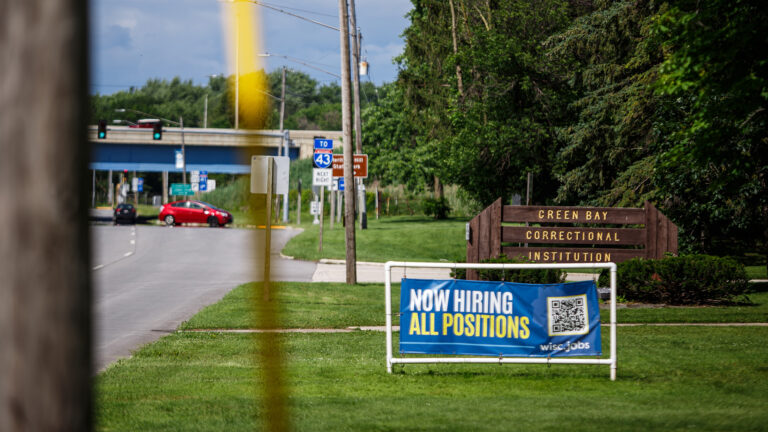
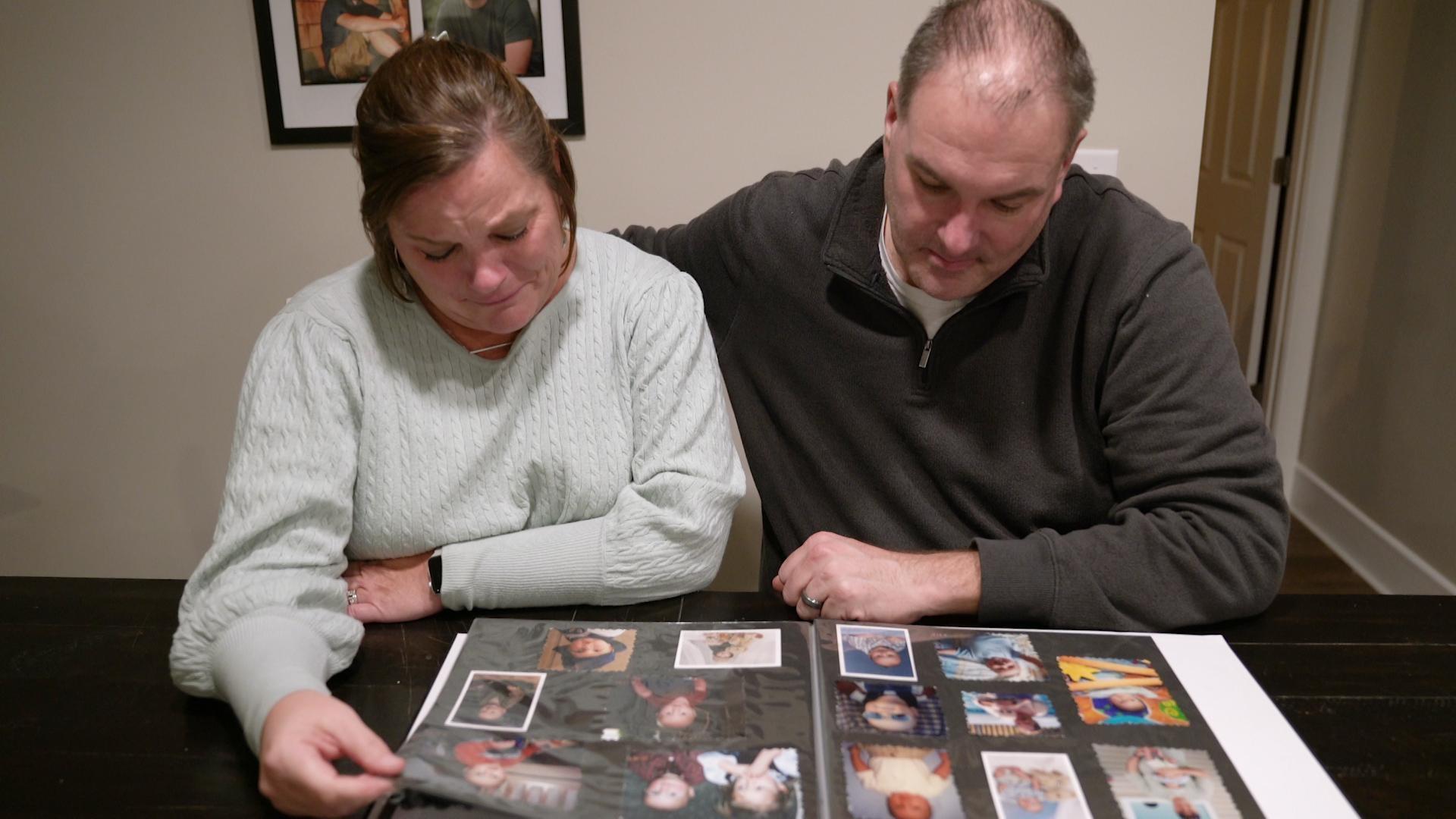
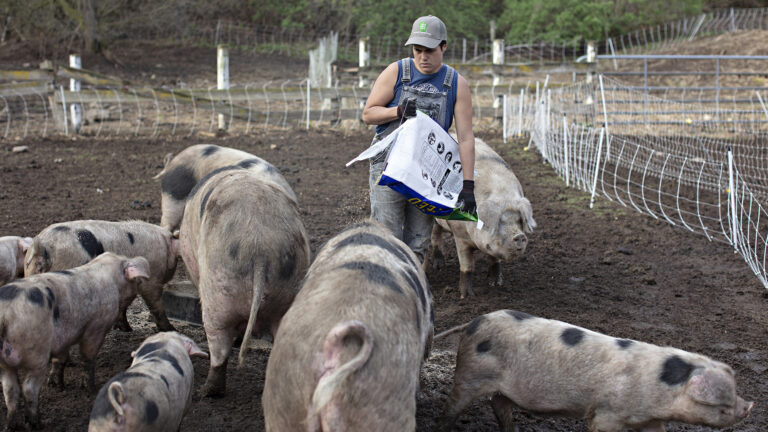
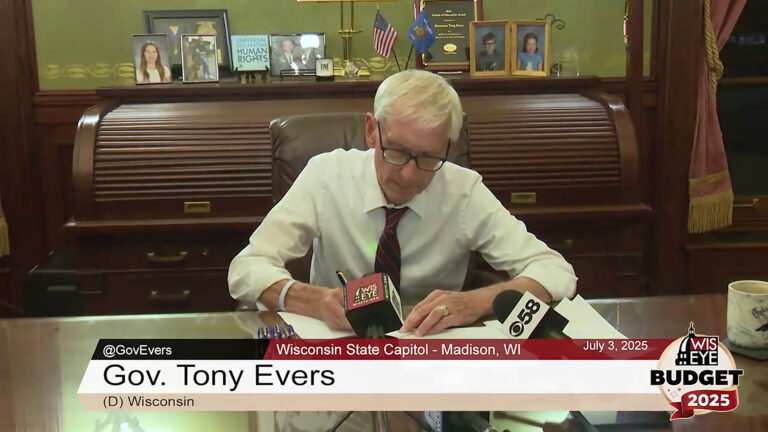

Follow Us